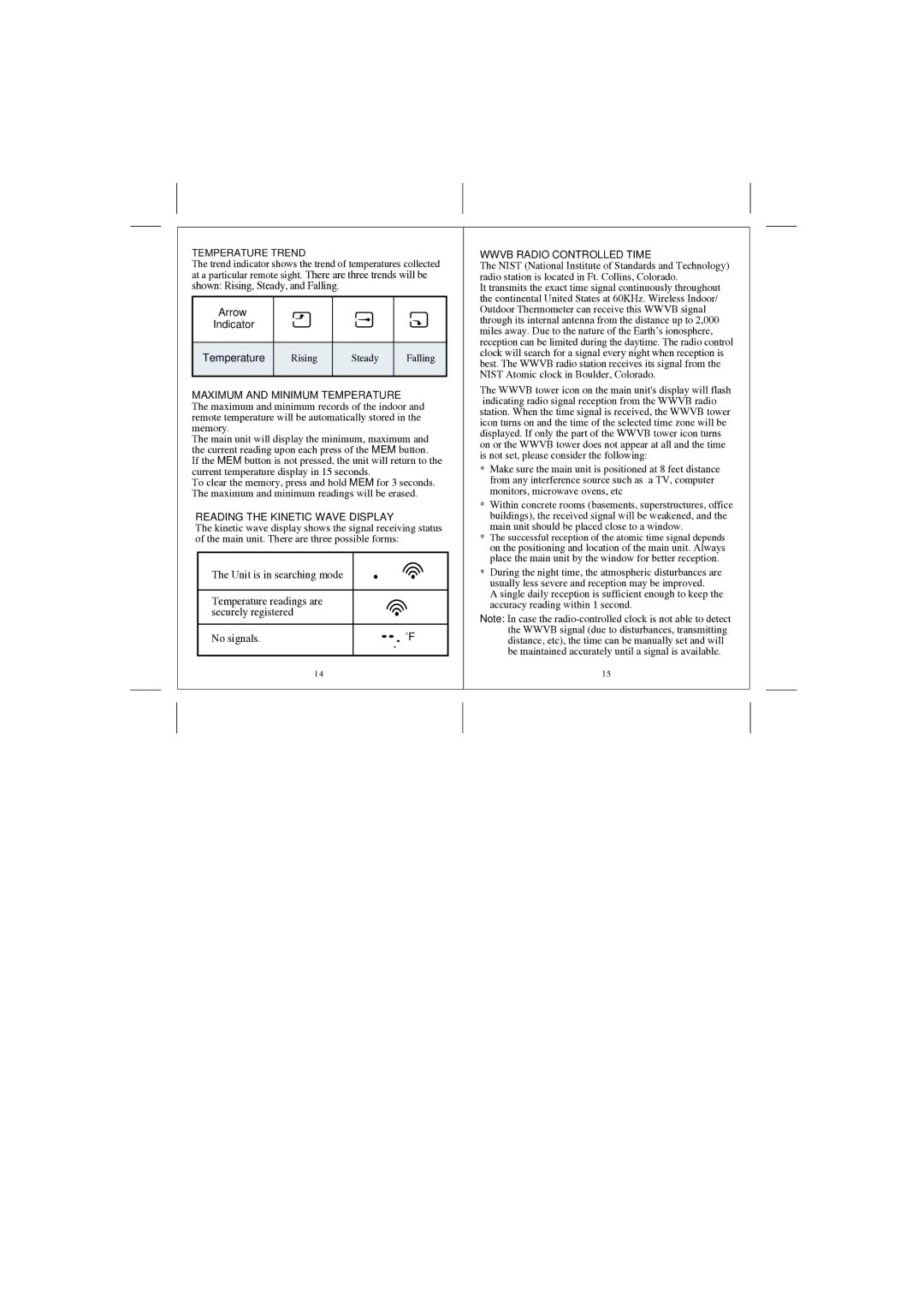
TEMPERATURE TREND
The trend indicator shows the trend of temperatures collected at a particular remote sight. There are three trends will be shown: Rising, Steady, and Falling.
Arrow
Indicator
Temperature | Rising | Steady | Falling |
MAXIMUM AND MINIMUM TEMPERATURE The maximum and minimum records of the indoor and remote temperature will be automatically stored in the memory.
The main unit will display the minimum, maximum and the current reading upon each press of the MEM button.
If the MEM button is not pressed, the unit will return to the current temperature display in 15 seconds.
To clear the memory, press and hold MEM for 3 seconds. The maximum and minimum readings will be erased.
READING THE KINETIC WAVE DISPLAY
The kinetic wave display shows the signal receiving status of the main unit. There are three possible forms:
The Unit is in searching mode
Temperature readings are securely registered
No signals. | ˚F |
14
WWVB RADIO CONTROLLED TIME
The NIST (National Institute of Standards and Technology) radio station is located in Ft. Collins, Colorado.
It transmits the exact time signal continuously throughout the continental United States at 60KHz. Wireless Indoor/ Outdoor Thermometer can receive this WWVB signal through its internal antenna from the distance up to 2,000 miles away. Due to the nature of the Earth’s ionosphere, reception can be limited during the daytime. The radio control clock will search for a signal every night when reception is best. The WWVB radio station receives its signal from the NIST Atomic clock in Boulder, Colorado.
The WWVB tower icon on the main unit's display will flash indicating radio signal reception from the WWVB radio station. When the time signal is received, the WWVB tower icon turns on and the time of the selected time zone will be displayed. If only the part of the WWVB tower icon turns on or the WWVB tower does not appear at all and the time is not set, please consider the following:
*Make sure the main unit is positioned at 8 feet distance from any interference source such as a TV, computer monitors, microwave ovens, etc
*Within concrete rooms (basements, superstructures, office buildings), the received signal will be weakened, and the main unit should be placed close to a window.
*The successful reception of the atomic time signal depends on the positioning and location of the main unit. Always place the main unit by the window for better reception.
*During the night time, the atmospheric disturbances are usually less severe and reception may be improved.
A single daily reception is sufficient enough to keep the accuracy reading within 1 second.
Note: In case the
15
